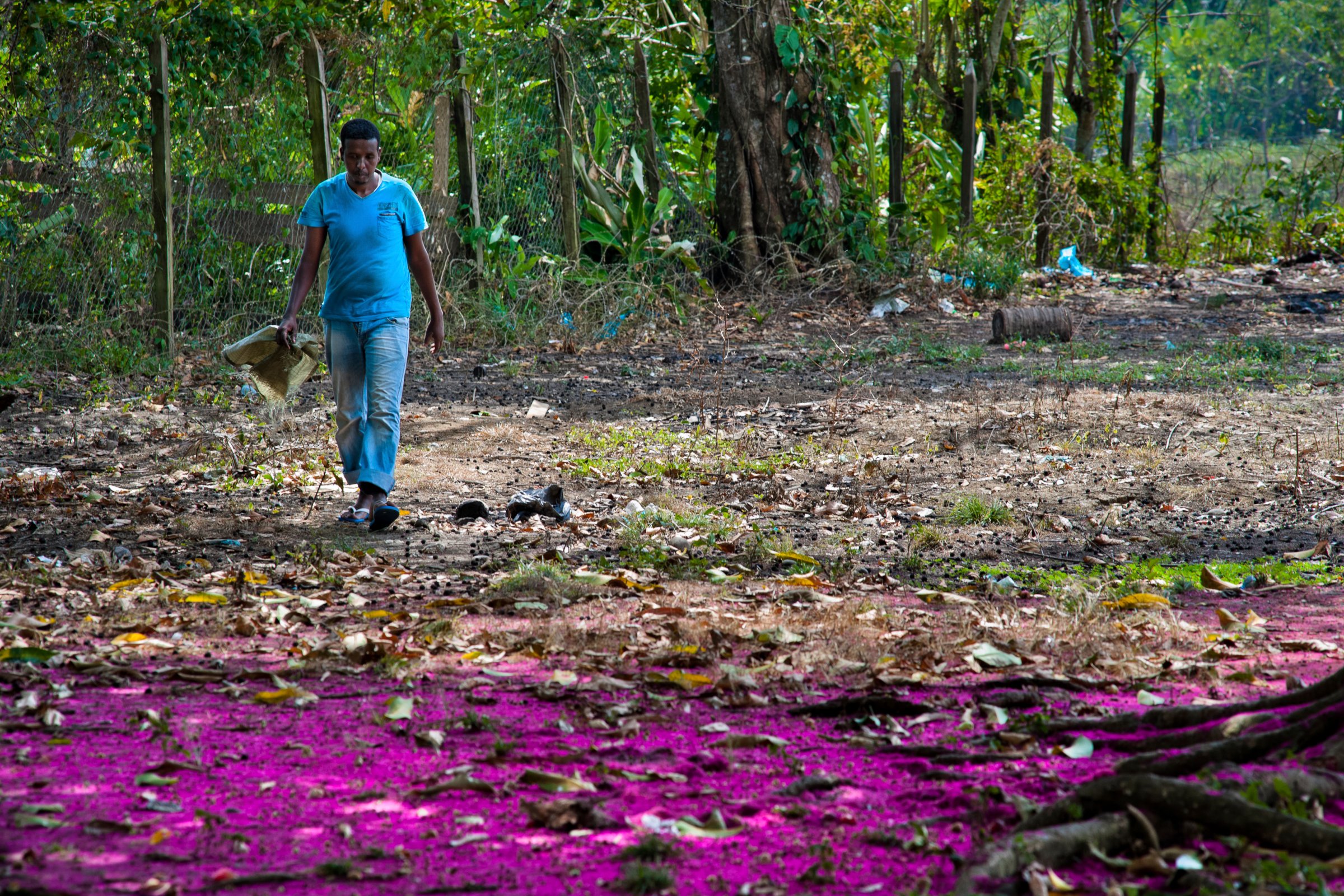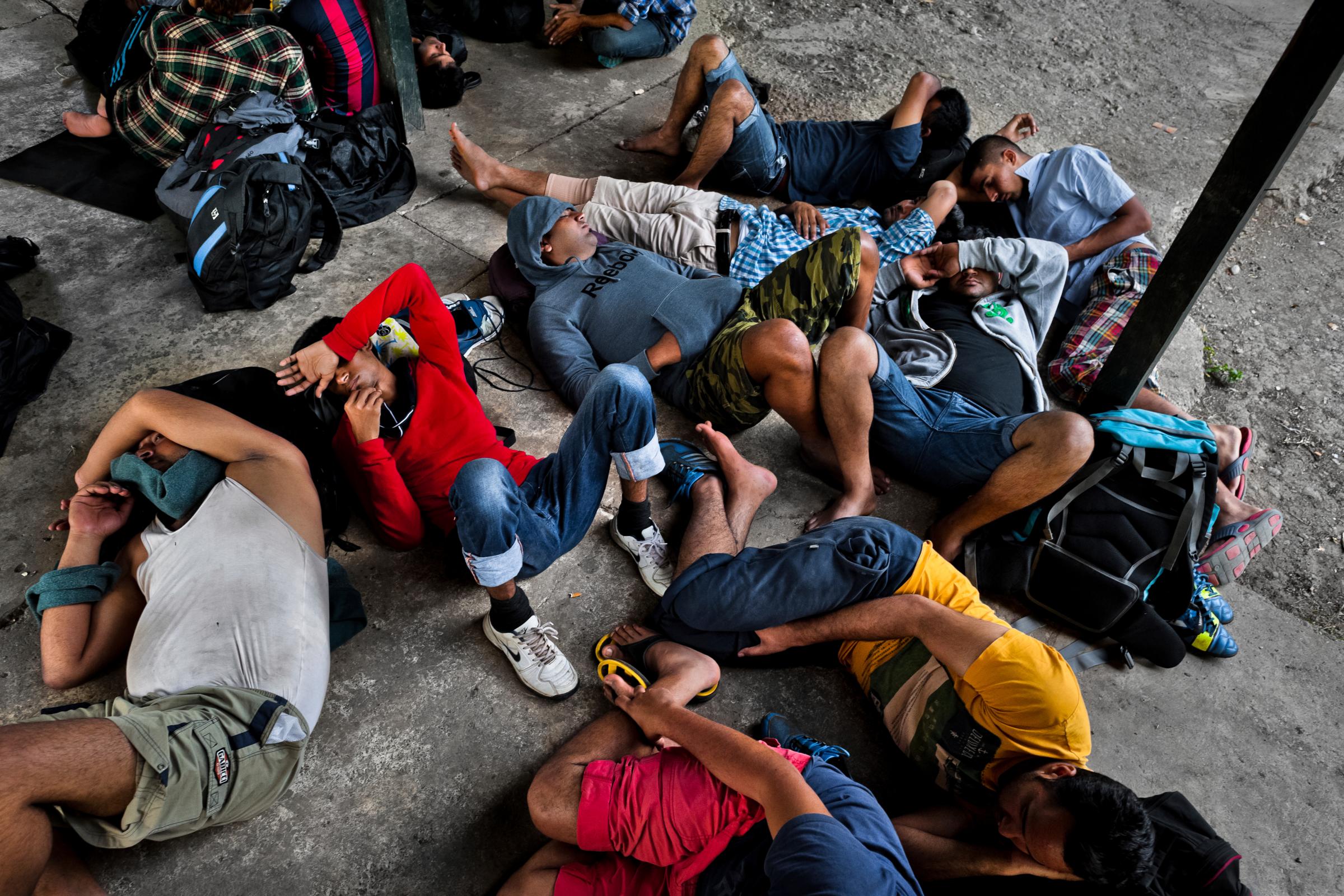
Merengue music blares through the bar’s speakers and patrons sway to the beat of the drums while sipping tropical cocktails. The ocean glistens to one side, while the lights of Capurganá flicker in the darkness; the thick jungle lies only a few hundred yards to the south. It’s around 10 p.m. and the locals and tourists alike are trickling in to enjoy the cool ocean breeze. Among the newcomers, two men quietly slip into the bar to order their beers. Pravan and Sabjajit, who both asked to use pseudonyms to prevent legal repercussions, arrived in this remote Colombian town on this warm June day after traveling over 10,000 miles from their native India. But the most treacherous part of their journey to the United States still lay ahead.
Though the news has focused on Central American migrants arriving in the United States, tens of thousands of people from countries around the world are also making it to the southern border. For Pravan and Sabjajit, their journeys began two years ago. In 2016, Pravan flew from India’s western coastal state of Gujarat, India to Guayaquil, Ecuador. A computer engineer by training, Pravan worked in Guayaquil to save money for his trip and subsequently became conversationally proficient in Spanish, his fifth language. Sabjajit—who is originally from Punjab in northern India—arrived in Guayaquil only three weeks before their arrival in Capurganá. When the two men met in Ecuador, they decided to travel north together. In just a few weeks, they had reached this town in northern Colombia, where they would wait for several more of Sabjajit’s friends from Punjab before continuing on to the Panamanian border.
In 2016, the Panamanian border patrol reported that it apprehended almost 20,000 migrants arriving irregularly from Colombia, while migrants who registered their transit with Colombian authorities came in at close to 34,000 for the same year. In an interview with Juan Gomez, a journalist and expert on migration in Colombia, he estimated that the number of migrants passing through Colombia is likely closer to 100,000 per year. According to Gomez’s data, half of the migrants come from India, and many others come from Cuba, Nepal, Bangladesh, and Eritrea. In 2017, migrants crossing into Panama also included people from Iraq, Sierra Leone, Yemen, Angola, and around 30 other countries.
These migrants are trying to escape wars, climate change, religious persecution, a lack of economic opportunity, and gendered violence. For example, migrants from Sierra Leone and Eritrea are frequently fleeing forced and indefinite conscription in their countries’ militaries. Others from Nepal have left a bleak situation after the 2015 earthquake destroyed vast parts of the country, and reconstruction has been slow. Pravan and Sabjajit each have a different reason for leaving India. Pravan fled Gujarat after facing persecution in his state for belonging to a Christian minority. Sabjajit hoped to reunite with his closest family member, a cousin living in New York.
Many of these migrants arriving to Capurganá hail from the middle and upper classes in their home countries. Much like Pravan, Asian and African migrants transiting through Colombia are often accomplished professionals who left careers as university professors, engineers, business owners and public servants. They are the only ones who can afford to pay the exorbitant fees associated with a journey around the world, often up to $30,000 per person.
The route to Capurganá—which is roughly the halfway point in many migrants’ journeys—is lengthy, complicated, and dangerous. Migrants arrive through one of three routes. For African migrants, the most common path is to arrive in Brazil by plane or cargo ship and to then travel to northern Colombia in cargo trucks. A second, cheaper option is to arrive in Brazil or Guyana and then travel through the Amazon rainforest to the Brazilian city of Manaus, generally on a small boat, before crossing into Colombia. The third option is Ecuador—which is the most popular with East and South Asian migrants—with most migrants arriving either to Quito or Guayaquil by plane, and then taking buses north to Colombia.
The route depends on the migrants’ nationalities and their smugglers’ preferred routes. Ecuador, Brazil, and Guyana serve as the most common entry-points for international migrants given the countries’ lax visa requirements. It is only once migrants cross into Peru or Colombia that issues of legality, authorization, or immigration enforcement become concerns. Pravan and Sabjajit avoided having to sneak into Colombia between ports of entry by using forged British passports. They then boarded buses and headed north along the Pan-American Highway until they reached Turbo, Colombia in the north of the country.
While buses serve as the primary transportation method for the majority of these migrants, they must disembark as they approach the Colombia-Panama border. This is the starting point of one of the world’s densest and most isolated stretches of jungle: the Darien Gap. This also happens to be the only passage between South and Central America. Within the Darien Gap, there are no roads or north-to-south rivers to help with navigation, and the only ways to successfully reach Panama are by trekking on foot or hiring a boat for the several hours it takes to circumvent this stretch. Migrants arrive on buses to the Colombian towns of Turbo or Necocli, and then must take a boat to one of three towns in the Darien Gap, including the town of Capurganá. From Capurganá, it takes anywhere from five to eight days to walk to the nearest road, town, or even the closest cell phone tower.

For migrants who recount their journeys from the U.S., the Darien Gap is often remembered as the most difficult section of the entire journey. There are only two ways to try to make it through. The first is to hike through the thick brush, which takes at least five days. This route is physically taxing, often requiring hacking through the jungle with machetes in extreme heat, without any basic services, and with no shortage of mosquitos and other disease-carrying insects. During the rainy season, the small streams running east to west frequently flood their banks, washing migrants away with their strong currents. As well as these natural barriers, this section of the jungle is also controlled by the Clan del Golfo. This Colombian criminal organization, and paramilitary group, smuggles drugs through the Darien Gap’s boundaries. It also controls the flow of migrants by demanding a tax from each for the right to pass. Migrants must contract a guide to get through the jungle but are frequently abandoned or turn back after getting lost or injured.
The second route into Panama is by boat. This route is only viable during the rainy season, as the dry season’s choppy waters make travel almost impossible. In Capurganá, migrants board small fishing boats and travel a few hours north into Panamanian waters before arriving to an indigenous reservation in southern Panama. From there, it is still a two to three day walk to the nearest highway or city where migrants can once again board a bus. While this route is shorter, it is more expensive and better regulated by Panama’s border patrol.
Migrants attempt to cross the Darien Gap almost every day, though many never make it through. One major obstacle, colloquially titled the Hill of Death, is the final 12-hour hike up a small mountain that migrants must conquer after several days of trudging through the jungle. The likelihood of getting lost in the jungle coupled with challenges like flashfloods, interactions with paramilitary groups, and complete exhaustion, frequently make the journey a fatal endeavor. The result then is that migrants’ stories go untold, their bodies lost, and their families remain with the uncertainty of never knowing how or where they disappeared. Even those who do emerge from the Darien Gap confront one of the most highly trained border patrol units in the Western Hemisphere: Panama’s SENAFRONT. These officers are trained by the United States military and often perform military-style operations along Panama’s borders.
As well as intercepting contraband, including drugs and weapons, SENAFRONT’s mandate includes the apprehension, and, more recently, the detention of migrants. Once a migrant is apprehended in Panama, he or she is sent to a detention center in the country before being deported. However, unlike the United States’ deportation process, Panama deports migrants back to Colombia, where they can attempt the journey again through the Darien Gap, stay in Colombia, or head back to their countries. In many cases, migrants spend months in Capurganá after being deported from Panama without the money or strength to try again. Yet according to the journalist Juan Gomez, “very few return to their home countries; they would rather die on the journey.” For migrants who have already traveled across continents and spent tens of thousands of dollars, giving up and returning home is simply not an option.
Yet, while Pravan and Sabjajit were about to embark on the most difficult part of their journey to the U.S., there are countless other migrants who won’t ever even make it to the Darien Gap. One of these migrants is Ibrahim, who along with his parents and two sisters, are living in Colombia after fleeing Iraq in 2015. The family decided to leave after the Islamic State group (ISIS) captured Mosul, selling their home and possessions to pay the $20,000 per person smuggling fee from Izmir, Turkey. The family of five set out on what would ultimately be a 43-day journey in a cargo ship toward their final destination of Miami, Florida. Yet when they finally exited the ship, Ibrahim recalls instantly recognizing that something was wrong. Rather than landing in Miami, the ship had docked in Buenaventura, Colombia.
The smuggler promised that this was all part of the plan. He claimed that the family just needed to rest at a local motel, and that the next morning they would take a truck toward the United States. However, by the time the group awoke, the smuggler had taken their passports, the remainder of their cash and all their possessions. Without a plan B, they decided to contact Colombian authorities and make asylum claims thousands of miles from their promised destination. For almost three years, Ibrahim and his family have been living in Bogota, working odd jobs, and accepting wire transfers from family members in Iraq to attempt to make ends meet. For now, their dream of heading to the United States is shelved while their options in Bogota remain bleak.
These experiences are not unusual, but they are invisible. In a few weeks, Pravan and Sabjajit may join the over 10,000 African, Middle Eastern, and Asian migrants arriving at the United States’ southern border each year, bringing with them only their distant memories of the rooftop bar in Capurganá and their experiences from the 12,000-mile journey with them. Like so many others, they will be quietly registered in the United States’ migration statistics, their stories untold.
More Must-Reads from TIME
- Why Biden Dropped Out
- Ukraine’s Plan to Survive Trump
- The Rise of a New Kind of Parenting Guru
- The Chaos and Commotion of the RNC in Photos
- Why We All Have a Stake in Twisters’ Success
- 8 Eating Habits That Actually Improve Your Sleep
- Welcome to the Noah Lyles Olympics
- Get Our Paris Olympics Newsletter in Your Inbox
Contact us at letters@time.com